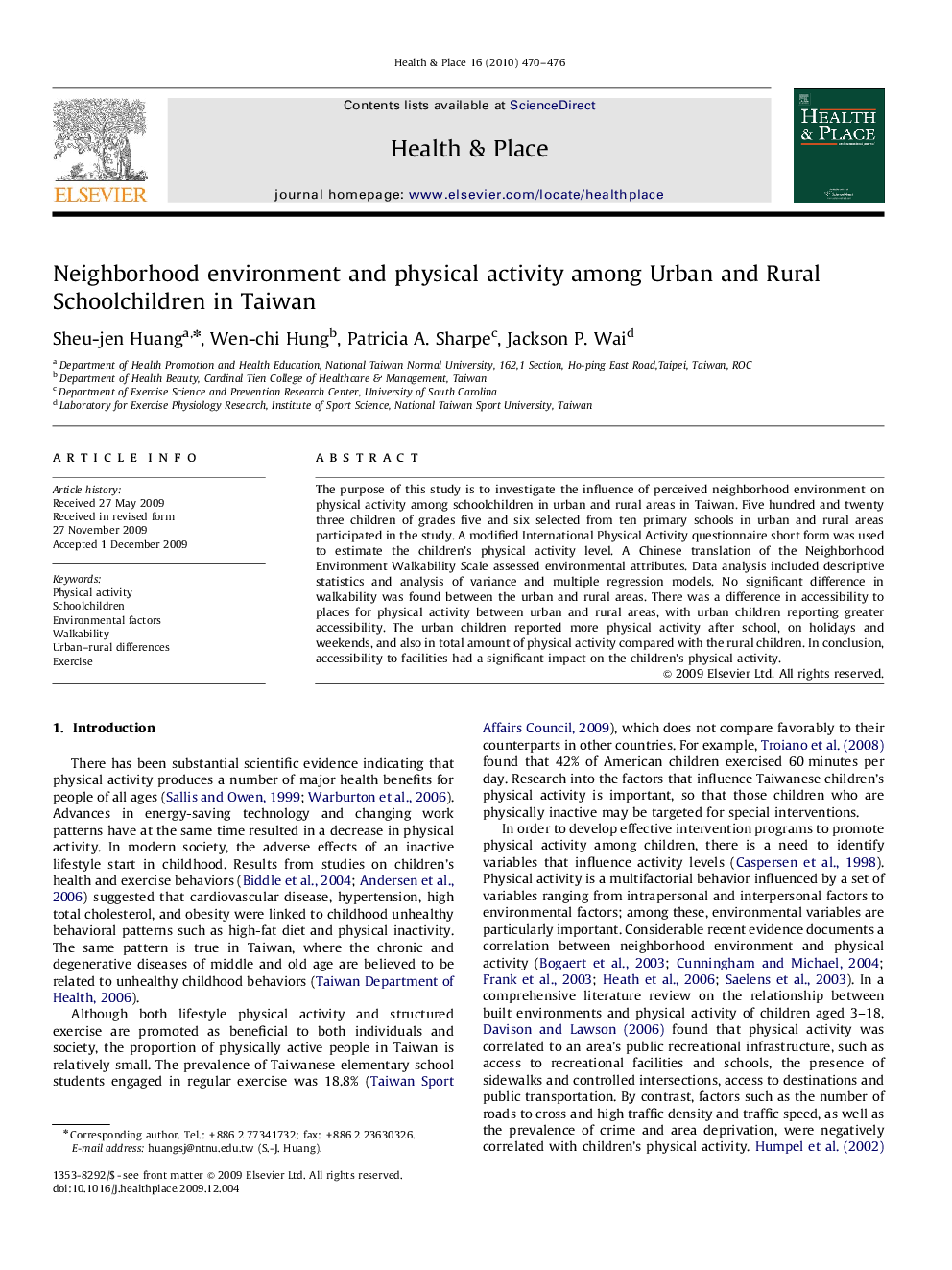| Article ID | Journal | Published Year | Pages | File Type |
|---|---|---|---|---|
| 10503031 | Health & Place | 2010 | 7 Pages |
Abstract
The purpose of this study is to investigate the influence of perceived neighborhood environment on physical activity among schoolchildren in urban and rural areas in Taiwan. Five hundred and twenty three children of grades five and six selected from ten primary schools in urban and rural areas participated in the study. A modified International Physical Activity questionnaire short form was used to estimate the children's physical activity level. A Chinese translation of the Neighborhood Environment Walkability Scale assessed environmental attributes. Data analysis included descriptive statistics and analysis of variance and multiple regression models. No significant difference in walkability was found between the urban and rural areas. There was a difference in accessibility to places for physical activity between urban and rural areas, with urban children reporting greater accessibility. The urban children reported more physical activity after school, on holidays and weekends, and also in total amount of physical activity compared with the rural children. In conclusion, accessibility to facilities had a significant impact on the children's physical activity.
Keywords
Related Topics
Health Sciences
Medicine and Dentistry
Public Health and Health Policy
Authors
Sheu-jen Huang, Wen-chi Hung, Patricia A. Sharpe, Jackson P. Wai,
